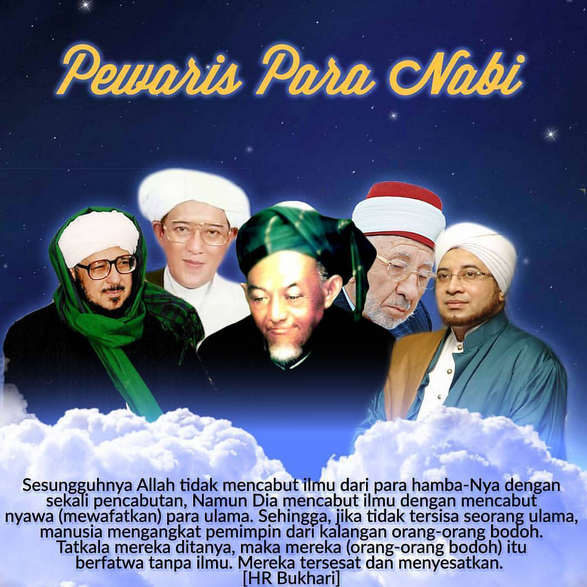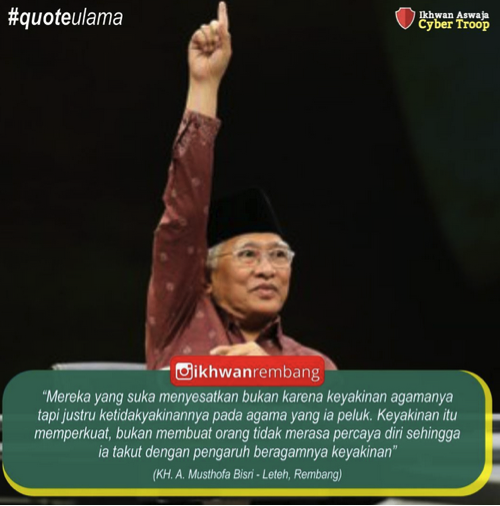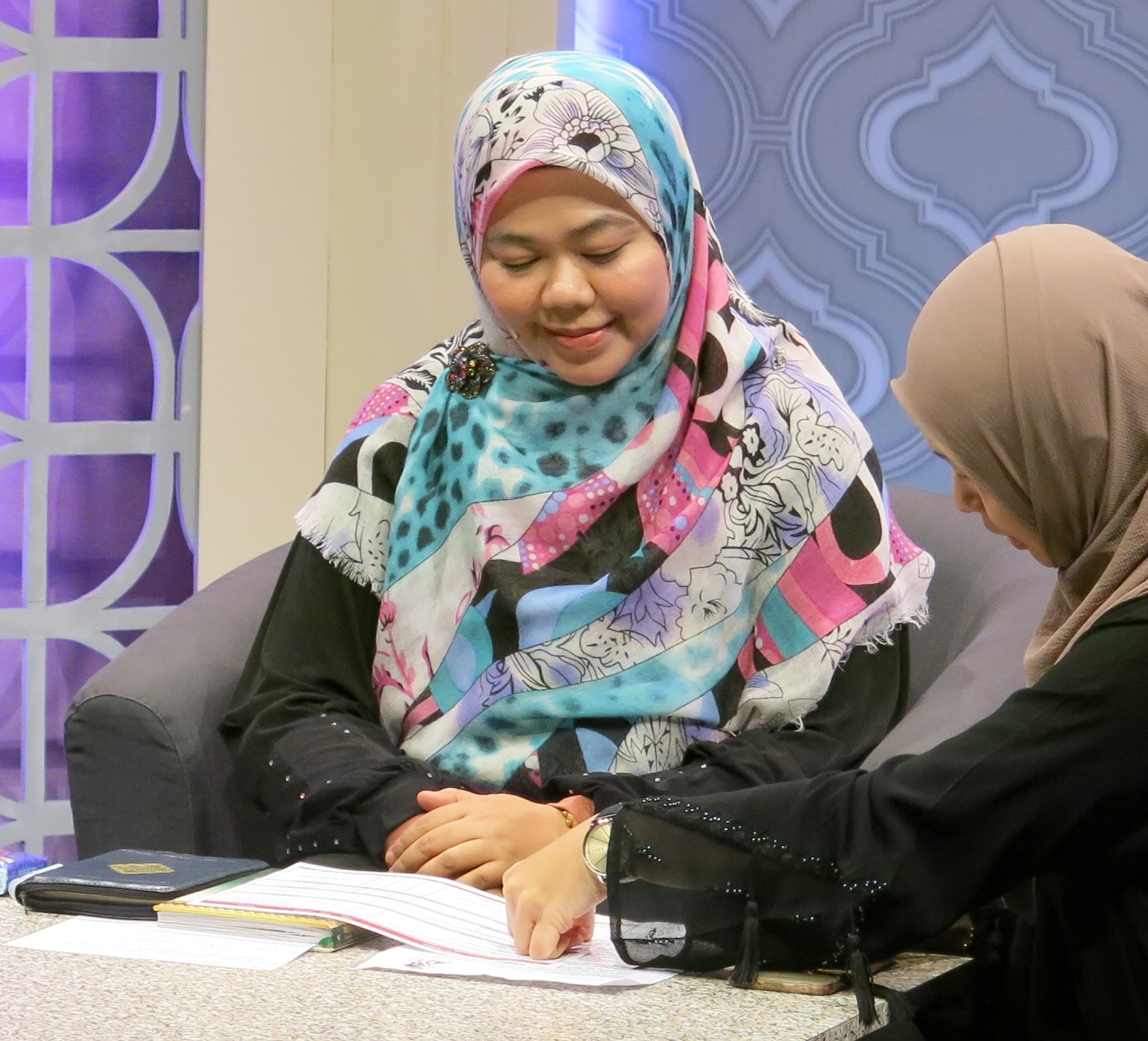Images of Authority
Despite rich Islamic artistic traditions, people tend to portray Islam as hostile to visual culture. Yet images often inform the ways in which Muslims negotiate religious authority. Practices of image-making in Indonesia and Malaysia illustrate this.
Although Islamic artistic and material traditions are rich and well-documented, scholarly and popular discourses especially in the West tend to characterise Islam and Islamic communities as hostile to visual culture. Controversies like the global outcry over the images of the Prophet Muhammad in the ‘Danish cartoons’ have reinforced this perception. In reality, however, images are part and parcel of the processes through which Muslims as well as non-Muslims perceive, interpret, experience, and portray Islam and its place in society.
Take, for example, the role of images in contestations about religious authority. In Indonesia, self-described ‘cyber warriors’ creatively alter and share images of inspirational kyai (religious teachers) and ulama (venerable religious scholars) to counter intolerance on social media. These cyber warriors are volunteers trained by Nahdlatul Ulama (NU), one of the country’s largest Muslim organizations, to fight against intolerance on social media.
On their social media accounts, which have between 10,000-80,000 followers, cyber warriors portray traditional religious leaders as the only true religious authorities, thus opposing the current fashion of following self-trained (and often intolerant) poster preachers. The image in figure 1, captioned ‘Inheritors of the Prophet’, shows five well-known deceased ulama. The accompanying text establishes the ulama as the only credible source of religious knowledge: ‘Actually, Allah does not withhold knowledge from his servants in any kind of way. He does however take away knowledge when he allows the ulama to die. Therefore, if there are no ulama left, people will choose their leaders from the ranks of ignorant people’.

Figure 1: "Inheritors of the Prophet" | image posted on Instagram (@ikhwanrembang, 31 October 2016).
Images on cyber warrior accounts often frame the knowledge of kyai/ulama as an antidote to societal problems. Figure 2 shows Mustofa Bisri (a prominent NU figure and Islamic scholar) making the tauhid sign (signalling the oneness of God). The quotation reads: ‘Those who like to mislead do not do this because of their religious conviction but, rather, because of the lack of belief in the religion that they have embraced. This belief strengthens. It does not make them feel insecure so that they become afraid of the influence of different persuasions’.

Figure 2: Image posted on Facebook (@ikhwanrembang, 21 October 2016).
These images (re)claim authority for the kyai and ulama, while criticizing other, newly emerging expressions of religious authority. The very nature of social media however also holds a risk of corroding that same authority. Anonymous volunteers cut and paste assumed quotations of kyai and ulama, often without attribution, and try to capture their sometimes complex ideas and religious interpretations in short messages. Thus, they freely interpret their legacy up to a point that sometimes it is not so clear anymore what was said and by whom.
Gender constitutes another dimension of the struggle for religious authority in Islam. In Malaysia, the audiences of public religious lessons, sermons and Islamic radio and television programs are often in large majority women. Female audiences have led to an increasing demand for female popular preachers who are generally seen as more attentive or sensitive to women’s problems and concerns compared to their male counterparts.
The increasing visibility of female preachers in the public sphere is not uncontested, however. Female preachers – or their husbands – are more concerned than men about their aurat, the parts of their body or bodily postures that they are not allowed to show or emphasize according to their interpretation of Islamic law, making many of them reluctant to appear on national TV. Ustazah Norhafizah Musa, a preacher popular among middle-aged women (and many men as well), prefers preaching on the radio for this reason. Yet she also recognizes how crucial the appearance on TV is for careers like hers to take off.

Figure 3: Ustazah Norhafizah Musa preparing for a recording of Tanyalah Ustazah. Photo by David Kloos.
Female preachers, Ustazah Norhafizah contends, require more skill than men. ‘A man does not have to think much. He enters, sits and talks’. A woman, especially a religious teacher or preacher whose behavior is seen as exemplary by her audience, needs to do a lot of thinking. How do I walk in? How do I sit gracefully? How do I talk? Who is my audience? Where do they sit? How do I make sure that I do not embarrass myself in front of men?
At first sight, female celebrity preachers in Malaysia seem to conform to (and thus reconfirm) dominant ideals of Malay Muslim femininity, focused on such virtues as a soft voice and a quiet body language. A closer look reveals a richer and more complex arrangement of gendered norms. The Instagram account of Ustazah Fatima Syarha, a preacher and writer popular especially among teenagers and young adults, contains (unsurprisingly) many pictures of her preaching. As a manifestation of a global celebrity culture, it is also full of photos and videos of her private life. These pictures are often homely, emphasizing her role as a mother and teacher to her children. Seen as a whole, however, the archive of images emphasizes the wide range of her activities, showing a woman who combines the virtues of good motherhood with a professional and successful career in the spotlights.
LUCIS Annual Conference
Between 13-15 December 2017, scholars from around the world and working within different disciplines will gather for the 8th LUCIS Annual Conference, titled Islamic Visualities and (In)visibities: Reimagining the Public Sphere. The conference, which includes performative, filmic presentations as well as papers, will discuss topics such as Islamic television, the making of Islamic activist imagery, and the emergence of new (sub)urban Islamocapes, to mention a few.
The conference focuses on practices of image-making. We see in this concept – which refers to the creativity and agency vested in the creation of images as well as the practices, relationships, and politics that inform the way in which ‘Islam’ is seen – a fruitful and hopefully inspiring starting point for the study of Islamic visualities and their impact on people and societies throughout the world.




0 Comments